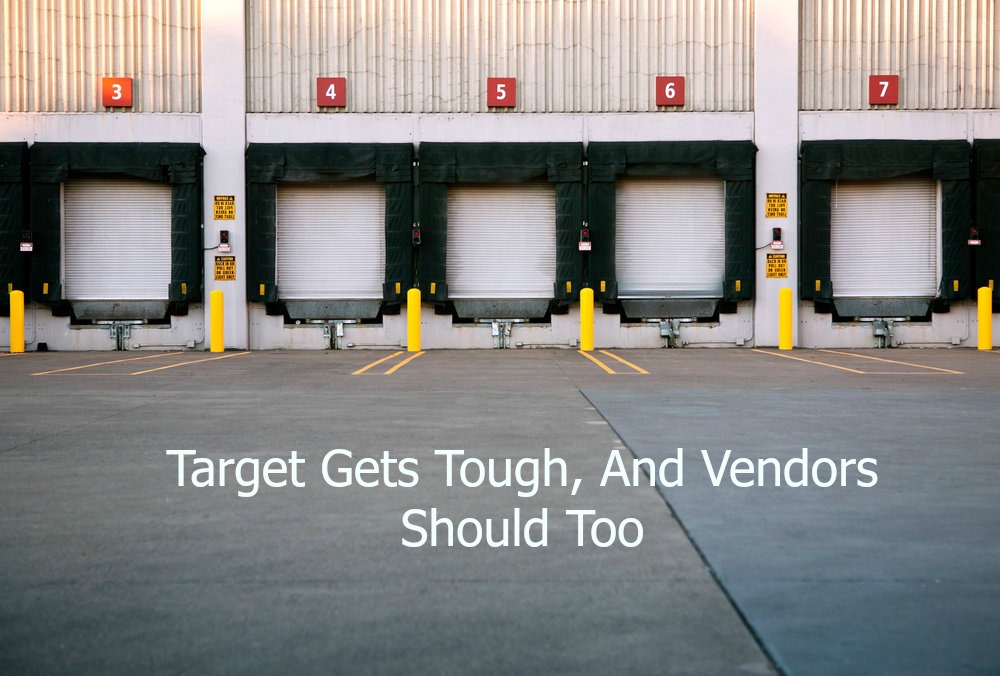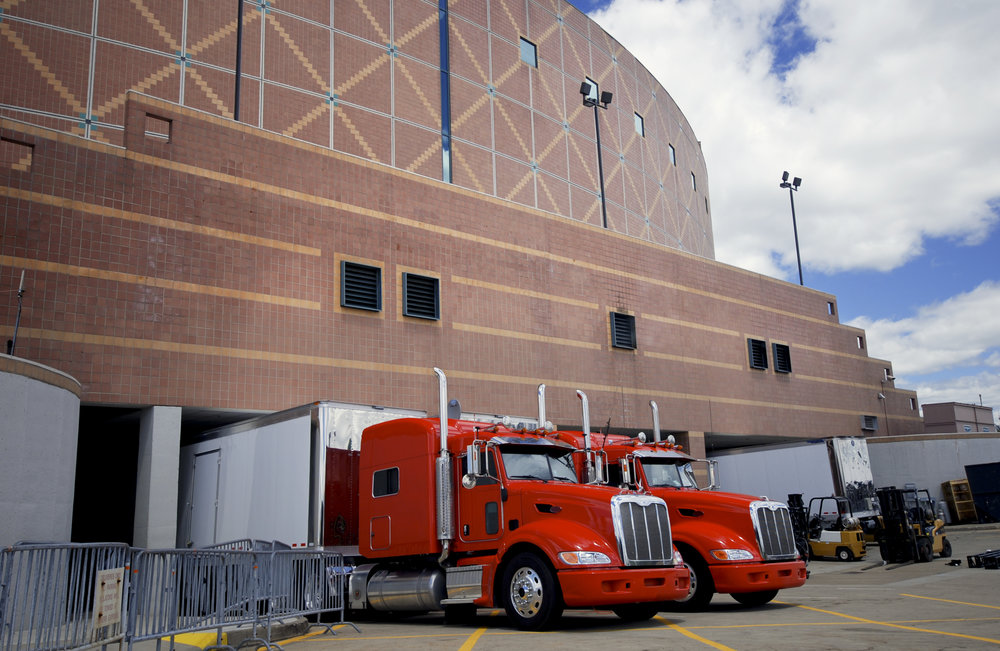Wasp Barcode Technologies: The Barcode Solution People
Target Gets Tough, And Vendors Should Too

They say that when the going gets tough, the tough get going. That’s an idiom that small and medium-sized business are going to have to take to heart if they want to keep doing business with massive U.S. retailers, which are dragging their suppliers into the modern era of inventory management with stringent new guidelines for deliveries.
Most recently, Target announced that they will fine and penalize suppliers that don’t meet new delivery windows, which are smaller than ever; they’ll also demand greater accuracy in those deliveries. This shift is hardly unprecedented or apropos of nothing, Target is looking to keep pace with giants like Wal-Mart and Amazon while expanding their offerings without drastically altering prices.
[su_divider top="no" size="2"]
[su_divider top="no" size="2"]
This isn’t exactly welcome news to suppliers, who in previous years had a few days of wiggle room when it came to getting their products from warehouses and production facilities to the back doors of Target stores. A recent Entrepreneur article on the topic included this important note:
A packaged foods supplier who ships products to Target's warehouses said the cost of narrowing the delivery window to a single day will be "entirely ours, and they won't share any of that."
Business owners are likely worried that the fines they’ll face from Target and other retailers will be enough to slash their profits and damage the bottom line. The question for those businesses is, what does a shift in guidelines like this really cost?
Companies like Target understand that there is nothing more costly than a popular item’s stockout. “Missed sales,” as Target called it in a letter, leads to customer dissatisfaction, which is unaffordable in a global market with such stringent competition. Having a system in place that tracks inventory from start to finish, from the provenance of goods to delivery at a customer’s (or distributor’s) doorstep is now essentially a requirement; it’s also easier than ever to incorporate into existing models.
[Tweet "Companies like Target understand that there is nothing more costly than a popular item’s stockout."]
This kind of accuracy is important for Target because the company’s scope is much larger than just keeping the shelves stocked at their big-box locations: They also need to make items available for online orders and allow customers to order online and pick-up in store. As such, all information needs to be accurate and not subject to outstanding risk factors such as theft, damage or misplacement.
Not everyone has gotten this memo: A poll of small business owners conducted by Wasp Barcode shows that 48 percent of them either don’t track inventory or use a manual process to do so. It will be nearly impossible for these companies to guarantee a single-day arrival date without a centralized database of inventory that is updated seamlessly via the cloud using, for example, wireless or bluetooth barcode scanners.
 Indeed, as of 2016 there are still holdovers from the era when spreadsheets were the backbone of inventory management. Whether due to a reticence to invest in new software, or comfort with a system that has “worked” well for years, or simple ignorance of better options, some businesses are still taking hours each work to manually input product information into spreadsheets. Putting aside the massive time commitment, spreadsheets are rife with errors and simply can’t compete with automated software when it comes to updating in real-time.
Indeed, as of 2016 there are still holdovers from the era when spreadsheets were the backbone of inventory management. Whether due to a reticence to invest in new software, or comfort with a system that has “worked” well for years, or simple ignorance of better options, some businesses are still taking hours each work to manually input product information into spreadsheets. Putting aside the massive time commitment, spreadsheets are rife with errors and simply can’t compete with automated software when it comes to updating in real-time.
So what is expected of the companies that supply Target with office supplies, beauty products, home decorations, electronics and even fresh produce and dairy? The same thing that Target expects of itself, according to Amy Koo, analyst for Kantar Retail: “In theory, everything can move faster, and they will have less stuff in the system.”
The idea that having less inventory on-hand will make businesses more capable of competing seems counter-intuitive you always want to be able to meet customer demand, and fewer products makes that less likely. If your inventory management system is automated, it can help you forecast correctly and ship out exactly what is needed, exactly when it’s needed.
The best way to do this is with a system that is based on barcodes, a technology that has been around for decades but has proven itself to be flexible and an essential building-block for visible supply chains. They are used in industries as varied as warehousing and medicine where nurses found noticeable reductions in blood transfusions errors as a result of instituting a barcode-based procedure.

Automated inventory tracking software helps businesses balance their inventory turnover ratio, which is the cost of goods sold divided by average inventory. A low ratio means the business is likely spending too much on inventory holding costs and may have deteriorating or even unusable inventory that has yet to be moved and is still on the shelves; a high ratio can mean insufficient inventory to fulfill an order, which in the case of dealing with Target can mean fines in the tens of thousands of dollars, compounding the issue. A balanced ratio allows businesses to “pull” rather than “push” their inventory, assuming that there are no weak links along the supply chain.
Depending on industry requirements, companies can even design and print their own barcodes, which appear as barcode labels and can become a part of an interconnected system of management and control. Some barcode printers are able to create labels that withstand the harsh environments that are often found in warehouses, from heat and cold to dust and dirt.
When vendors worry about having to incur the costs of keeping up with Target’s new policies (not to mention the policies of Wal-Mart, Amazon and so on), they are referring to this: Investment in tools like barcode printers, labels, scanners and unifying software. It’s true that upfront, these tools cost money. They fall to take into account the money not being made, and being lost, when using manual processes, which are sometimes not obvious. There are the errors that create incomplete shipments, and the extra time needed to account for inventory (and then cross-reference that count with any additions or subtractions made throughout the day as orders came in and out), of course; there’s also the stress and strain that manual processes put on the workforce every day, week and month, leading to increased employee turnover (which is incredibly expensive) or sick days taken; there’s also the opportunity cost of forcing your employees to do menial tasks when an automated count would free them up to think about ways to improve efficiency or to interact with customers.
For years, businesses have adopted technological innovations to make communication and production easier, and many even jumped aboard the inventory control train when faced with the realization that this was simply another arena that could be improved with automation and software. By adopting these new guidelines for delivery accuracy, Target is simply announcing that the grace period for making these changes is over (though the company itself is allowing its vendors between 30-90 days to adjust). There is simply not enough wiggle room for retailers to allow for missed or incomplete shipments, and those that refuse to make the necessary upgrades to ensure that will be left in the dust or at least outside the walls of the big-box retailers, which for many small and medium-sized businesses are the key to viability.
This is the summer of supply chain reckoning for many business owners. Time to adapt or get comfortable paying Target and other companies for the luxury of staying in the past.
How does your business make certain popular inventory never runs out?





